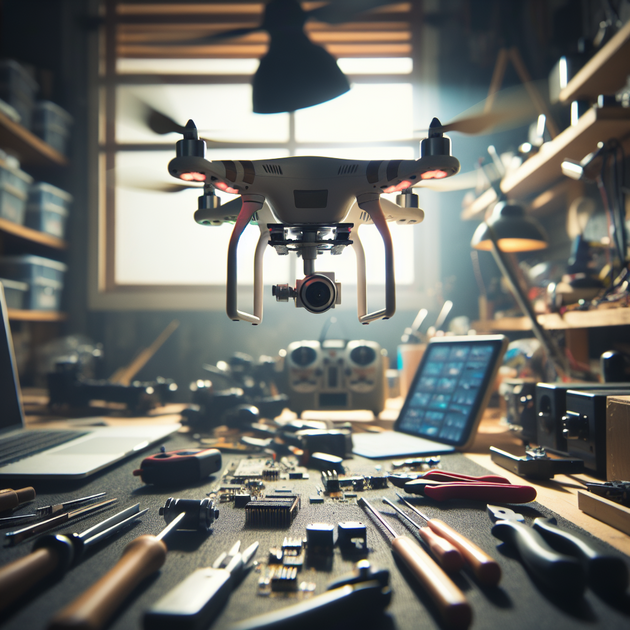Have you ever spent hours building a DIY drone, only to watch it drift around like it’s had one too many cups of coffee? You’re not alone—and the answer often lies in something called PID tuning.
What Are PIDs and Why Do They Matter?
Before we dive into the nitty-gritty of tuning PIDs for your DIY drone, let’s quickly cover the basics. PID stands for Proportional-Integral-Derivative. Think of these as three dials you adjust to tell your autopilot how hard to correct when the drone starts to tilt or drift. If the dials are set wrong, your drone might wobble uncontrollably or lazily float away from where it should be hovering.
Getting those settings right is absolutely key if you want a steady hover and responsive controls—especially when you’re relying on LoRaWAN transceivers and sensor fusion (like EKF with IMU data) for localization.
Common Tools & Techniques for Manual PID Tuning
So how do you actually go about tuning PIDs by hand? While there are fancy automated tools out there (and some flight controllers offer auto-tune modes), most hobbyists still start with manual adjustment—especially if you’re running custom code or want full control over your setup.
Here are the go-to methods most makers use:
- Start with Defaults: Use baseline values from similar drones or firmware documentation as a starting point.
- Adjust One at a Time: Only change one part (P, I, or D) before testing again—this makes it easier to see what each tweak does.
- Test in Safe Conditions: Hover low over soft ground with plenty of space around. Always have an emergency stop ready!
- P Gain First: Increase until you get quick response but not “bouncing.” If it oscillates rapidly—back off.
- I Gain Next: This helps hold position over time. Turn it up until drift stops, but not so much that slow “wobbling” begins.
- D Gain Last: Adds “damping” against sudden movement. Turn this up gradually if you see overshoot after quick stick inputs.
- Log Data if Possible: Recording sensor data while flying makes it way easier to spot issues later.
Troubleshooting Common Issues While Tuning PIDs
It sounds like you’ve already fixed integral windup (nice job!), but now your drone just won’t sit still—even without obvious oscillation. This is a classic sign that something’s still off in your tuning mix:
– If increasing P gain helped responsiveness but made things shaky or twitchy, dial it back.
– If the drone drifts slowly but never snaps back to center after a correction—it’s usually the I gain that needs more attention.
– If it overshoots each correction and takes forever to settle down after moving the sticks—that could mean D gain is too low.
Don’t forget environmental factors! Windy rooms or outdoor breezes can make any tune look worse than it is.
A Real-Life Example of PID Tuning Frustrations
Let me tell you about my first real attempt at tuning PIDs on my own homebuilt quadcopter. The localization was solid—I was using an EKF fusing IMU and UWB data just like you—but every time I tried to hover in place it would slowly wander off like a distracted puppy.
I spent days fiddling with numbers until I realized my I gain was way too low; the autopilot just wasn’t correcting small drifts over time. Once I boosted I gain (but kept D gain just high enough to avoid wobbles), everything clicked into place. It wasn’t magic—but when that quad finally hovered in one spot without wandering off? Pure satisfaction.
Final Tips & Takeaways
Tuning PIDs for a DIY drone is equal parts science and patience. Start with small changes and don’t rush—sometimes just waiting a few seconds between adjustments gives better results than chasing perfection all at once.
– Always save previous settings before making big changes
– Take notes on what each change does
– Don’t hesitate to search forums or ask other builders—they’ve probably experienced exactly what you’re seeing
Have you tried any creative approaches or tools while tuning your own drones? Share what worked (or didn’t work) in the comments!

Leave a Reply